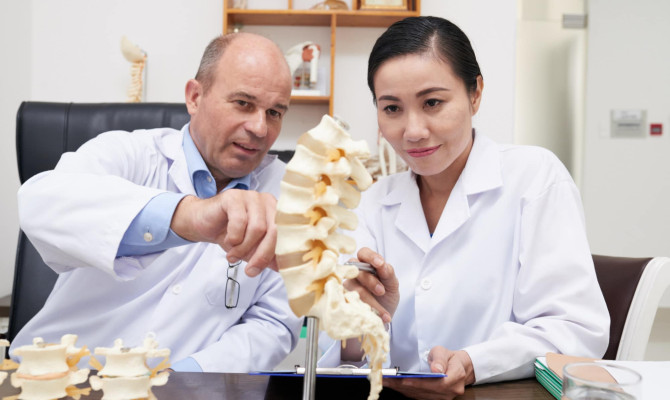Hemorrhoidectomy: Uses, Process, and Risks

- Hemorrhoidectomy
- 22 Aug 2023
Overview
What is Hemorrhoidectomy?
Hemorrhoidectomy is a clinical procedure performed to remove hemorrhoids, which are swollen, inflamed veins in the lower rectum or anus that can cause pain, itching, and bleeding. There are two forms, internal and external. While non-surgical remedies may offer temporary relief, there are cases where a more definitive and lasting solution is required.
To assist folks looking to make an informed choice regarding this treatment, we will describe the procedure, its goals, healing, and considerations in this post.

Uses
Uses of Hemorrhoidectomy
People with severe or persistent hemorrhoids who do not respond to non-surgical treatment are usually advised to get Hemorrhoidectomy. Still, the choice is typically taken after other conservative treatments, including dietary changes.
Following are the cases where topical drugs and lifestyle changes have not been able to provide sufficient relief and Hemorrhoidectomy is the only solution:
- Chronic or severe symptoms
- Recurring hemorrhoids
- Thrombosed hemorrhoid
- Complicated cases
Chronic or severe symptoms
- They can develop hemorrhoid tissue through the anus, creating severe, ongoing symptoms, including constant discomfort and bleeding.
Recurring hemorrhoids
- If they keep coming back despite attempts at non-surgical therapy, it might be said that the underlying problem has been permanently resolved.
Thrombosed hemorrhoids
- The surgery may remove the thrombosed hemorrhoid and treat the symptoms when external hemorrhoids generate blood, which causes extreme discomfort and swelling.
Complications associated
- When they result in complications such as chronic bleeding, anemia, and infections, intervention may be required to address the underlying issue and stop the condition’s progression.1Uses| Researched based study from Nlm.nih.gov ,2Uses| Researched based study from Nlm.nih.gov
The Process
Hemorrhoidectomy process
The general steps in a surgery are summarized here:
Anesthesia
- Before the procedure, the patient will undergo anesthesia to assure their comfort and pain-free experience. The type of anesthetic used may vary, although it usually is either general (which puts the patient to sleep) or local (which keeps the patient awake but blocks out discomfort).
- The patient is positioned correctly, either resting on their back or adopting a modified lithotomy position that entails crossing their knees to block access to the anal region completely.
Exposure and preparation
- To ensure a sterile environment, the surgeon will carefully clean and sterilize the inside space before placing a surgical drape.
Internal hemorrhage removal
- External hemorrhoidectomy, or the Milligan Morgan operation, is a surgical treatment for prolapsed internal hemorrhoids that are still treatable and can be pushed back inside. This entails creating incisions around the tissue, removing it, and then closing the wound with sutures.
- A stapled hemorrhoidopexy may be used in some situations, especially for more minor internal hemorrhoids. The tissues are repositioned during this treatment, and their blood supply is cut off, allowing the bloated tissue to contract and recover.
External hemorrhoidectomy
- After making an incision around the hemorrhoids, the surgeon removes the swollen tissue, and the wound is stitched up.
Hemostasis
- The surgeon ensures that any bleeding is controlled once the tissue has been removed and the area is adequately rinsed.
Dressing and post-care
- After the procedure, the patient is taken to a recovery section where they are attentively monitored after they wake up from an anesthesia. The site is usually covered with the dressing or gauge.
Recovery and post-operative care
- Patients will be given detailed instructions on how to take care of the surgery site, manage pain, and steer clear of activities like rigorous exercise or prolonged sitting and standing that could put undue strain on the area while it heals.
- Applying ice packs to the anal area for the first 24 to 48 hours can help reduce swelling and pain.
- Over the counter pain relievers, dietary changes and stool softeners may also be advised to encourage easy bowel movements and avoid excessive pressure on the site.3The Process| Researched based study from Nhs.uk ,4The Process| Researched based study from Nlm.nih.gov
Complications

Hemorrhoidectomy Complications
Pain and discomfort
- Patients may feel pain and discomfort in the surgical area after the surgery. This is a typical healing process, but it can have a significant impact, especially in the days right following surgery. Pain can be controlled using prescribed painkillers and other suggested methods.
Bleeding
- After surgery, some degree of bleeding is standard, but excessive or prolonged bleeding may occur in rare circumstances. To reduce the risk of excessive bleeding, carefully follow the post-operative instructions and report any excessive bleeding to your healthcare professional.
Infection
- An infection at the surgery site is possible. Keep the region clean and adhere to all post-operative care instructions to lower the disease risk. Increased pain, redness, swelling, worms, and pus at the surgical site are indications of infection.
Analogic stenosis
- Rarely, there may be too much scar tissue on the operative side as it heals. Anal stenosis is a disorder where the inner orifice narrows and may make bowel movements difficult; it could also call for more care.
Urinary retention
- Urinary retention, a side effect of anesthesia that some patients may have, is difficulty emptying their bladder following the treatment. If this happens, it should be reported.
Fecal incontinence
- While uncommon, there is a small risk of developing fecal incontinence after a hemorrhoidectomy. It is the inability to control bowel movements that causes uncontrollable feces leaks. This complication is usually associated with damage to the anal sphincter during the surgery.
Recurrence
- In some cases, the new hemorrhoids may develop, or the previously treated ones can recur. Recurrence can be influenced by factors such as diet, lifestyle, and underlying conditions contributing to hemorrhoid formation.3Complications| Researched based study from Nhs.uk ,4Complications| Researched based study from Nlm.nih.gov
Alternatives
Non-surgical alternatives to Hemorrhoidectomy
Dietary modifications
- Increasing fiber intake from fruits, vegetables, whole grains, and legumes helps soften stools and improve bowel motions, lowering strain, which is crucial in controlling hemorrhoids.
- Water consumption must be sufficient to maintain soft stools and avoid constipation, which might worsen the symptoms.
- Avoid coffee, alcohol, and spicy meals because these may aggravate your condition.
Topically applied medicines
- Lotions, ointments, or suppositories can all be applied topically to the troublesome area.
- These medicines frequently include components that might lessen inflammation, irritation, and discomfort, such as hydrocortisone, witch hazel, or astringent.
Lifestyle adjustments
- It can make a big difference. Regular exercise reduces the risk of developing hemorrhoids and eases symptoms by enhancing blood circulation and bowel function.
- Minimizing further strain on the rectal area is possible by avoiding extended sitting or standing and taking breaks to move around.
- Proper toilet habits can also be helpful, such as refraining from excessive wiping and not straining during bowel movements.
Rubber-band ligation
- Internal hemorrhoids are frequently treated with this technique. To stop the base’s blood flow during surgery, a little rubber band is put around the area.
- Within a few days, they wither and disappear, relieving the symptoms.
Sclerotherapy
- Injection with a chemical solution is applied for the hemorrhoids to shrink and recede. This is mainly employed for internal ones that cannot be tied off with a rubber band.
- The remedy causes scar tissue, which slows blood flow and accelerates the condition’s gradual retreat.
IRC, or infrared coagulation
- It is a non-surgical process in which the tissue is exposed to infrared radiation, which causes it to thicken and contract. It is a short, painless outpatient operation that has the potential to be successful for small to medium-sized hemorrhoids.5Alternatives| Researched based study from Nlm.nih.gov
Bottom Line
The bottom line
Hemorrhoids are a frequent ailment that can make sufferers feel uncomfortable, painful, and irritated. To select the best course of action for therapy, depending on unique circumstances and the severity of the ailment, it is imperative to seek medical advice.
Any feedback on this article?
 This Articles content was accurate
This Articles content was accurate Very Informative Article
Very Informative Article I have a question or a comment
I have a question or a comment
 This article contains inaccurate content
This article contains inaccurate content This article was not helpful
This article was not helpful I have a question or a comment
I have a question or a comment
We appreciate your helpful feedback!
Checkout our social pages
References
-
National Library of Medicine
Hemorrhoidectomy - making sense of the surgical options | Uses
-
National Library of Medicine
Hemorrhoidectomy | Uses
-
National Health Service
Colorectal Haemorrhoidectomy | The process | Complications
-
National Library of Medicine
Complications Following Anorectal Surgery | The Process | Complications
-
National Library of Medicine
The non-surgical management for hemorrhoidal disease. A systematic review | Alternatives



































